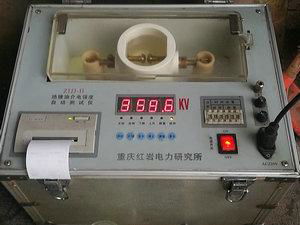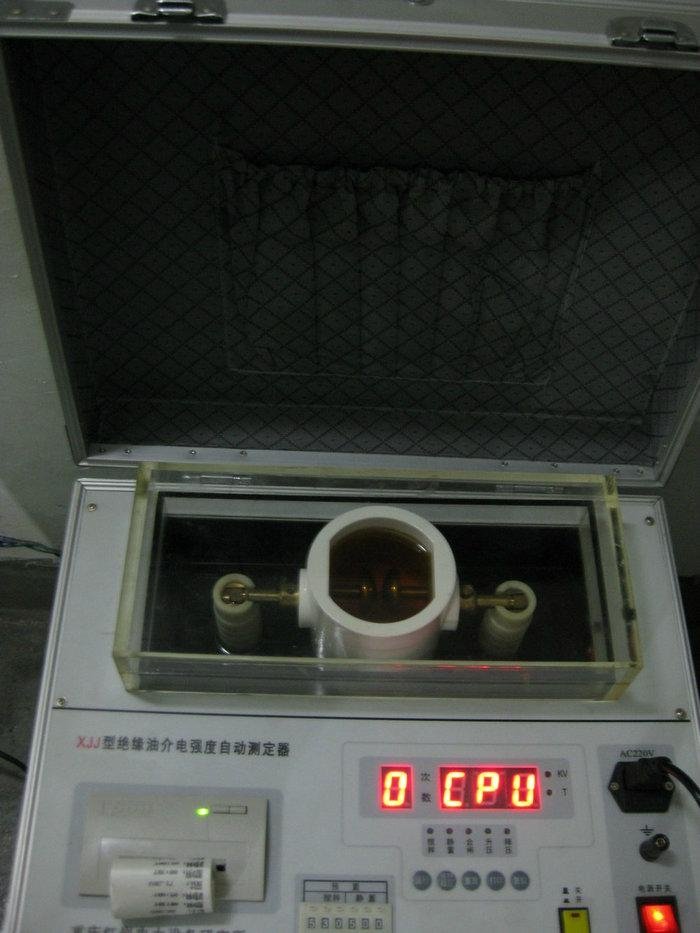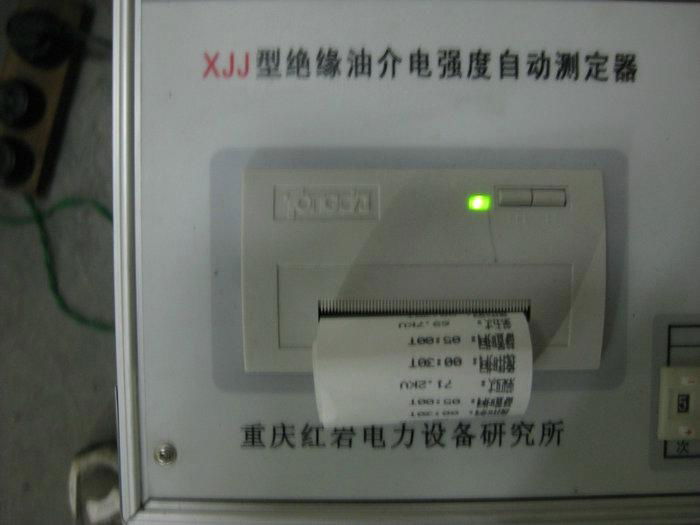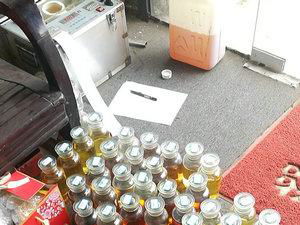Check the appearance of the running oil, you can find the oil. This item should be recorded in routine tests.
New transformer oils generally have darker colors in operation, but normally this trend is slower. If the color of oil products is sharply deepened, it is necessary to investigate whether the equipment is overloaded or overheated. If other relevant characteristic test items meet the requirements, they can continue to operate, but monitoring should be strengthened.
。 The increase of water content in transformer oil and insulating materials will directly lead to the decline of insulation performance and oil aging, which will affect the reliability and service life of the equipment. Strict supervision of water content is an indispensable test project to ensure the safe operation of equipment.
Breakdown voltage of transformer oil is a very important supervisory means to test the endurance of transformer oil to ultimate electrical stress.
Usually, it mainly depends on the degree of contamination, but when the oil contains high moisture or impurity particles, it has a greater impact on the breakdown voltage.
7. Dielectric loss factor: The dielectric loss factor is very sensitive to judge the aging and pollution degree of transformer oil. New oil contains less polar impurities, so the dielectric loss factor is very small, generally only 0.01%-0.1% order of magnitude; but when oil is aged due to oxidation or overheating, or when other impurities are mixed in, the polar impurities and charged colloidal substances gradually increase, and the dielectric loss factor will increase accordingly, and the aging products of oil are very small, which can not be detected by chemical methods. At the same time, the dielectric loss factor can be clearly distinguished. Therefore, the measurement of dielectric loss factor is a common means of transformer oil inspection and supervision, which has special significance.
8. Interfacial tension: The measurement of interfacial tension between oil and water is an indirect and effective method to check the soluble polar impurities in oil caused by aging. In the initial aging stage, the interfacial tension changes rapidly, and then decreases in the middle aging stage. The formation of sludge increases obviously, so this method can also make a reliable judgment on the trend of sludge formation.
9. Sludge: This method checks the sludge sediments that can be precipitated from the oil when n-heptane is added to the running oil in the dissolved or colloidal state. Because of the different solubility of sludge in new oil and old oil, sludge will precipitate when new oil is infiltrated into old oil. The sludge deposition will affect the heat dissipation performance of equipment. At the same time, it will cause serious corrosion to solid insulating materials and metals, leading to the decline of insulation performance and greater harm. Therefore, sludge precipitation test must be carried out when mixing oil at a ratio of more than 5%.
10. Flash point: Flash point is an indispensable project for the supervision of running oil. The decrease of flash point indicates the production of volatile combustible gases in oil, which are often caused by partial overheating of electrical equipment and thermal cracking of insulating oil caused by arc discharge at high temperature. The failure of the equipment can be detected in time by measuring the flash point. At the same time, for new filling equipment and transformer oil after maintenance, measuring flash point can prevent or discover whether light distillate oil is mixed, thus ensuring the safe operation of equipment.
11. Gas component content in oil: Flammable gases in oil are generally produced by partial overheating or discharge decomposition of equipment. If the cause of flammable gas is not identified and eliminated in time, it is very dangerous to the safe operation of equipment. Therefore, it is very effective for eliminating latent faults of transformers to determine gas components in oil by gas chromatography. This project is an indispensable test content in transformer oil operation supervision.
12. Water-soluble acids: Transformer oil is easy to produce low molecular organic acids, such as formic acid and acetic acid, in the primary stage of oxidation, because these acids are water-soluble. When the water-soluble acid content in oil increases (i.e. the pH value decreases), the solid insulating materials and metals will be corroded, and the insulation performance of electrical equipment will be reduced, and the service life of equipment will be shortened.
13. Condensation point: According to China's climate conditions, transformer oil is classified according to low temperature performance. For example, the freezing points of the three brands 10, 25 and 45 are - 10, - 25 and - 45 C, respectively. Therefore, it is necessary to determine the condensation point for the acceptance of new oil and the mixing of different grades of oil.
14. Volume resistivity: The volume resistivity of transformer oil is the same as the dielectric loss factor, which can judge the aging degree and pollution degree of transformer oil. Water content, contaminated impurities and acidic products in oil can affect the reduction of resistivity.



